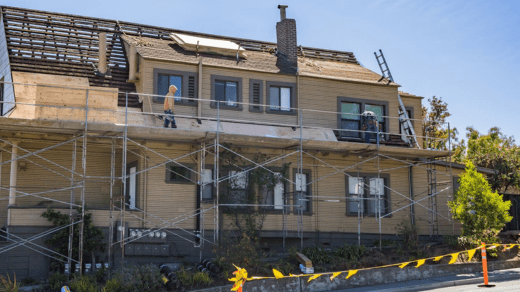Your home’s roof is one of the most important and protective structures in your house. It shields you from harsh weather elements, insulates your home, and adds to its overall aesthetic appeal. But have you ever wondered what makes up this vital part of your home? In this article, we’ll discuss the main parts of a roof and their functions to help you better understand how it all works together.
What is Your Roof Made Out Of?
The main material used in constructing a standard roof is shingles. These are individual overlapping pieces that come in various materials such as asphalt, wood, metal, or tile. Shingles are then layered and attached to the frame of your house using nails or other fasteners. The type of shingle used can affect the overall appearance and durability of your roof. For example, metal shingles provide better protection against harsh weather conditions compared to asphalt shingles.
How Does it Protect Your Home?
The main purpose of a roof is to protect your home from the elements. This includes rain, snow, wind, and extreme temperatures. Shingles are designed to create a waterproof barrier that prevents water from seeping into your home. Additionally, shingles also provide insulation, keeping your home warm in the winter and cool in the summer. The slope of the roof also plays a role in directing water away from your house and preventing pooling which can cause damage over time.
What Supports Your Roof?
Roofs are not just made up of shingles; there are also other important structural components that support it. These include rafters, trusses, and joists. Rafters are beams that support the weight of the roof and transfer it to other parts of the house. Trusses are prefabricated triangular structures that provide additional strength and stability to your roof. Joists, on the other hand, are horizontal beams that help distribute weight evenly across your home’s walls. All these components work together to ensure your roof is strong and able to withstand external forces.
What Keeps Your Roof Intact?
In addition to shingles and structural supports, there are also other smaller but equally important parts of a roof such as flashing, underlayment, and gutters. Flashing is a thin metal strip used to seal gaps between different sections of a roof like around chimneys or vents. Underlayment is a layer of material that sits between the shingles and the roof deck to provide an extra layer of protection against leaks. Gutters are also essential as they collect and redirect rainwater away from your home’s foundation, preventing water damage.
Parts of Your Roof
1. Roof Deck
The roof deck is the base layer of your roof, typically made of wood or metal. It provides structural support and forms the foundation for the rest of the roof components. The type and quality of material used for the deck will affect the strength and durability of your entire roof. Savannah Roofs LLC are professional roofing contractors that you can trust in building a highly stable roof that will protect your home for decades to come.
2. Underlayment
Next up is the underlayment, a layer of protective material that goes on top of the roof deck. This can be made from felt paper, synthetic materials, or rubberized asphalt and serves as an additional barrier against water and moisture.
3. Shingles or Tiles
Shingles or tiles are what most people think of when they imagine a roof. These are the visible outer layer of your roof and play a crucial role in protecting your home from the elements. Shingles can be made from various materials such as asphalt, wood, metal, or clay, each with its own set of benefits and drawbacks.
4. Flashing
Flashing is a thin strip of metal that helps to seal gaps and joints on the roof. It prevents water from seeping into these vulnerable areas and causing damage to the underlying layers.
5. Gutters and Downspouts
While not technically part of the roof itself, gutters and downspouts are essential components that work alongside it to protect your home from water damage. These channels collect rainwater and direct it away from the roof and foundation, preventing water buildup and potential leaks.
6. Ventilation System
A well-ventilated roof is crucial for maintaining a healthy and long-lasting home. The ventilation system allows air to circulate within the attic space, preventing moisture buildup that can lead to mold growth and other issues.
Additional Components
Apart from these main parts, there are also other components that contribute to the functionality of your roof. These include ridge caps, which cover the peak of your roof; soffits, which provide ventilation for your attic; and fascia boards, which protect the edges of your roof from water damage.
Understanding the different parts of your roof and their functions can help you make informed decisions when it comes to maintenance and repairs. Regularly checking and maintaining these components will ensure that your roof continues to provide adequate protection for your home. Remember, a well-maintained roof is an investment in the safety and longevity of your house. So, take care of it, and it will take care of you!

